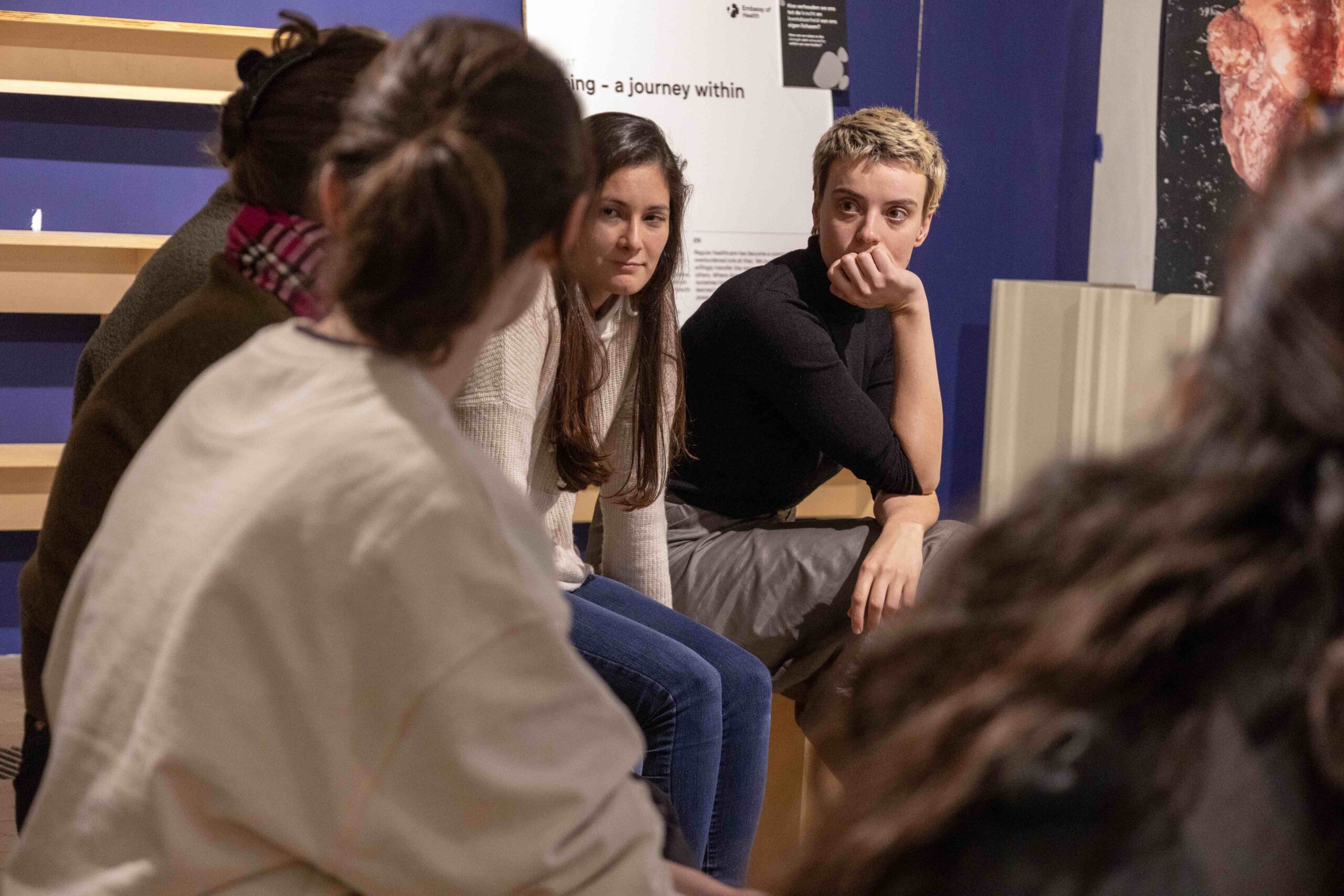collaborations
for future
Social concerns
Research by Femke Coops
Text and editing by Alexandra Szwaj & Kornelia Dimitrova
How does society view, value and relate to design and science?
This is the fourth and final instalment of Chapter one. This time we zoom into the social conditions and emotional considerations that shape how, with whom and why we work on climate change.
How society views, values and relates to design and science has a great impact on the professional career choices that individuals make, and therefore on the development of the fields. This much we learned from this first community meeting. From funding structures to the public image, we navigate social hierarchies and perceptions, and we prioritise certain professions and their opinions over others. Every so often, when we get the chance to step out of our disciplinary bubble, we can look back critically and pose the question: Is this what my job should be about?’ In this section we bring our attention to the social concerns that come about when we collaborate with other disciplines on climate change.
On values and valuations
In our discussions, some designers pointed out that in Western societies, science is widely respected and seen as having high societal value. Scientific facts often carry more weight in decision-making compared to the outcomes of design projects. On the flip side, some scientists felt that society tends to appreciate and value designers more because of the aesthetics and direct usefulness of their work, as well as their ability to engage the public. What’s fascinating is that while these stereotypes exist, the exchanges within this group setting have shown that the full picture is more complex and carries contradictions.
In this discussion we could break down some of these stereotypes. This is crucial in interdisciplinary collaborations because stereotypes can lead to narrow expectations for both scientists and designers. This can hinder our understanding of each other’s work and perpetuate inequalities, both real and perceived. These perceived values often shape the work we produce, the roles we take on, and even funding policies. Science is often seen as rigidly objective and detached, while design is viewed as inherently creative and focused on aesthetics. These traditional views not only affect individual collaborations but also reinforce boundaries between disciplines and societal perceptions of the value of science and design. In the face of the climate crisis, we must move away from these narrow views and find new ways to collaborate effectively.
Beyond public perceptions, we also discussed the financial and employment aspects of being a designer or scientist. Some participants associated being a scientist with financial stability and job security, although not all scientists shared this view. These discussions provide an opportunity for the designers and scientists of Collaborations for Future to share their experiences, methods, and motivations with each other, fostering empathy, open communication, and collaboration. They also shed light on the inequalities between the two communities, which can pose challenges to setting up effective interdisciplinary projects.
Personal perspectives
Emotions and personal perspectives also play a significant role in our work. While science is often seen as purely objective, but in the context of the climate crisis many climate scientists feel a strong personal connection to their research, driven by the urgent need for action. This emotional aspect resonated with designers in our program, who expressed a desire to support the scientists and engage with the emotional aspects of climate science. Similarly, creativity in design involves making subjective decisions. Overall, our discussions highlighted the need to challenge conventional views of science and design and explore new funding and collaboration models. By recognizing the emotional dimension of climate change and embracing diverse perspectives, we can pave the way for more effective communication and collaboration in addressing pressing global challenges.
Societal stereotypes affect how professionals from different disciplines see and value their own work and that of others. This can produce inequalities in funding and employment conditions. Interdisciplinary collaborations, such as Collaborations for Future, need to address this, not because inequalities are easily removed, but because this lays the ground for honest and fair communication between the parties. This is essential as we seek new collaboration models together, as a community of inquiry.
This is the fourth and final instalment of chapter one, presenting the main shared interests and concerns, discussed during the first community meeting. When we encounter professionals from other disciplines and we begin working with them, we bring with us three aspects – disciplinary, professional and personal. By discussing these in a structured way we can find more open ways to begin working together. As a community of inquiry, we hope to slowly start moving beyond the ‘traditional’ roles attributed to designers and scientists, creating room for trying out other roles and agencies. For us, this was an insightful first meeting and moment of the research – for the pairs, perhaps a moment of realisation that there are 18 other people in the same field of exploration.
In the second meeting, we look at what the collaborators have learned from and about each other’s practice, and how they see their agency, and what assignment or theme they think is worth working on together. Tune in again next month when we publish Chapter #2, in which we focus on the peculiar question of ‘How do we know we know enough about an issue to start taking action?’. We’ll delve into the issues when different ways of knowing meet each other, and on the difficulty of finding agency within large and complex situations such as climate change.
